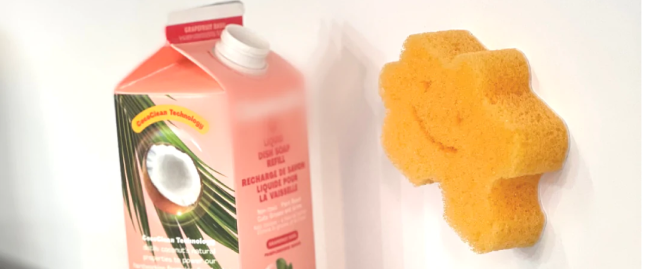Korean Meat Skewers Made to Perfection

The history of barbeque skewers for threading, storing, and cooking meat over fire dates back to the Middle Ages.
This versatile tool has stayed with people over centuries and up to today, as can be seen in traditional markets and modern restaurants with variations by countries and regions.
Russian shashlik are skewered grilled meat cubes widely enjoyed across Central Asia, while souvlaki from Greece are chicken, beef or lamb with vegetables on skewers.
First records of the Korean version of skewers, known as kkoji or kkochi, date back to the 17th-century cookbook, “Eumsik Dimibang (Recipes for Food Tasting).” The food culture later developed through the influence of Japan’s yakitori, which are dak-kkochi in Korean.
Dak-kkochi, grilled chicken skewers dipped in sweet and spicy sauce, is the most popular type still easily encountered today in street markets as light snacks in between meals.
However, when one decides to visit a specialty kkochi restaurant, a wide selection of kkochi will be offered beyond the humble dak-kkochi, from seafood and vegetable options to fish cakes and tteok.
Each restaurant’s unique ingredients, different grilling techniques and specialty sauce are interesting factors worth observing and comparing.
Kkochi restaurants are usually open during the evening, and ordering drinks are generally encouraged per table.

Hwasangong Kkochijip
A five-minute walk from Hyochang Park Station, Hwasangong Kkochijip is a kkochi specialty restaurant that has been in business for 13 years.
More than 20 different types of skewers are on the menu, each dipped and cooked in various kinds of restaurant-made specialty sauce.
"My husband and I made our sauce variations to match with the texture and taste palate of each kkochi type," Han Mi-young, co-owner of the Hwasangong Kkochijip, told The Korea Herald.
Hwasangong Kkochijip takes extra care with the daily brining process for its chicken. The trick is to get rid of the unpleasant gamey taste, while adding adequate flavor to keep the meat tender and juicy.
All kkochi at Hwasangong Kkochijip fall on the sweet and spicy side, with garlic and soy sauce used as the base.
The restaurant’s signature and most popular is the dak gaseumsal (chicken breast) skewer with roasted ginko nuts.
The owner recommends having kkochi with altang (spicy pollack roe stew), to enhance the skewers’ flavor.

Gu-un
Gu-un, a small but cozy kkochi specialty restaurant, is located just around the corner from Mangwon Traditional Market.
A cute signboard with two skewer icons next to each other is lit up at the entrance every day at 6 p.m., signaling its opening.
A minimal amount of sauce is used at Gu-un, whose kkochi are seasoned mostly with basic salt and pepper, not to hamper each ingredients' original taste.
Similar to Japanese omakase, once you order a modeum (assorted) kkochi, plates of two to four skewers come out one by one, consecutively.
The chef told The Korea Herald that this is done so guests can enjoy each one to its fullest, without the former skewer's flavor or greasiness covering the next one.
The texture of kkochi is crispy, perfect for those fond of the crunchy texture of grilled meat or seafood.
Gu-un's most-ordered menu is the samgyeop kkenip mari (pork belly and rolled sesame leaf) kkochi. A thin slice of pork belly is rolled together with sesame leaf, so that the meat and veggie harmoniously blends in at first bite.
A modeum kkochi plate with seven skewers is priced at 22,000 won. When ordered individually, each stick ranges from 3,500 won to 5,000 won,
One beverage per person is required, with beer and whiskey available alongside soft drink options.

Yakitori Yoisa
Yakitori Yoisa is located between Apgujeong and Sinsa stations. As its name suggests, the main chef of the restaurant graduated from Tsuji Culinary Institute in Osaka, Japan, and learned yakitori in the neighborhood before he opened the restaurant in Korea some two years ago.
"Irasshaimase!" Guests entering the hall are cheerfully greeted in Japanese and guided to a table. Waiters at the restaurant kindly explain each menu item and recommended ways of enjoying yakitori.
A small dish of complimentary coleslaw is served on the side to be eaten with yakitori, a popular way of enjoying skewers in Japan.
The meat cubes at Yakitori Yoisa are noticeably thick compared to other restaurants.
A must-try special menu at Yakitori Yoisa is the dak daedongmaek (chicken main artery) kkochi, which usually gets sold out before 8 p.m. on weekends. The texture is very chewy and has an earthy and unique flavor.
For those who prefer tender meat, the dak moksal (neck meat) is recommended.
Walk-ins are accepted, but Naver reservations are encouraged during weekends, since the restaurant fills up quickly within an hour of its opening at 5 p.m. Kkochi options range from 2,500 won to 4,000 won per plate.
At least one drink per person should be ordered at Yakitori Yoisa.
Source: Kim Hae-yeon, The Korea Herald, 2023
More Korean Innovation News

A Korean Marriage Story

Jwipo, Your New Jerky Obsession

Try these old-fashioned Korean snacks this Lunar New Year

Korean Sci-fi film ‘Jung_E’ tops Netflix charts

To Binge or not to Binge?

Revenge: K-drama exposes school violence

Woodstock to spread peace and love in Korea

The Little Cellist: 11-year-old prodigy takes First Prize


